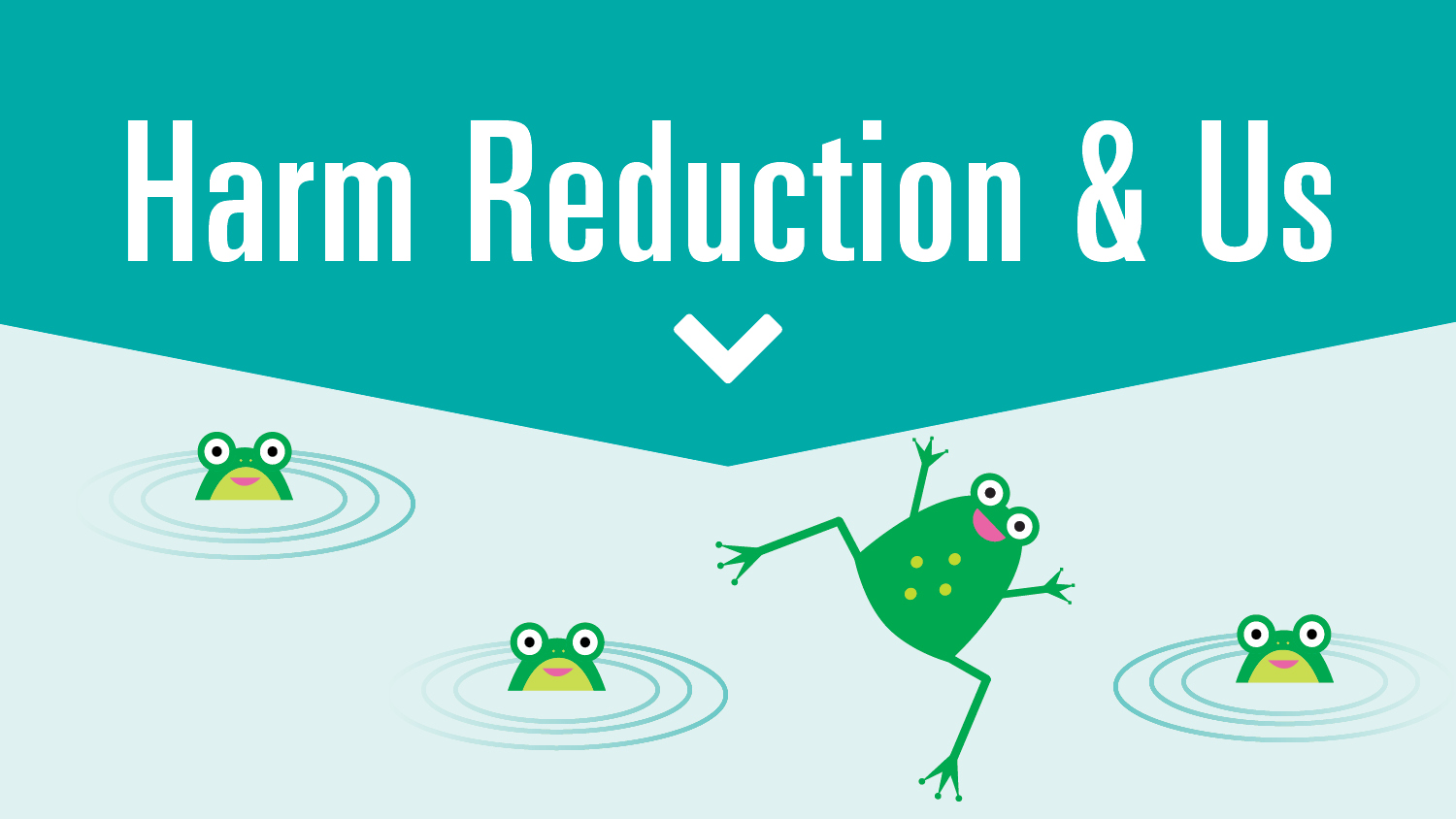Harm Reduction & Us

What is Harm Reduction
Harm reduction does not enforce the abstinence of drugs, rather it takes a pragmatic approach to drug use by recognizing socio-ecological influences. There is not one single perspective to harm reduction, rather principles of harm reduction focus on the well-being of communities. The prioritization of harm reduction is to keep people safe, prevent injury from high-risk behaviour and view substance use through a health lens rather than a criminal lens.
Frogs in a Pond
One framework to better understand the principles of harm reduction is to visualize “frogs in a pond”. If a frog acts unusual, we might see what is going on in the pond, rather than question the frog itself. The pond has all factors that can trigger substance use, like our friends and family. All our interactions have different influences on us.
Even beyond campus, there are challenges we uniquely experience everyday that can shape our choices towards substance use. The practice of substance use goes beyond our individual choices. Factors like social norms, availability of drugs and alcohol, and level of community health promotion play a significant role in our lives.
Party Culture
Being a student, party culture on campus can seemingly encourage us to drink more alcohol or consume more cannabis than we normally would. Party culture on campus is real and influences all of us. Whether you have experienced borderline embarrassment from a blackout, an anxiety-driven high or helped a friend get home safely, it happens to the best of us. But we can control our relationships with substances by practicing harm reduction.
Looking back to my first year of university, I was guilty of excessive partying. Entering university with preconceived notions of partying, like binge drinking and smoking, led me into a spiral of bad habits. It ultimately jeopardized my grades and commitments. It didn’t take me long to realize the risk of alcohol and cannabis use wasn’t worth it.
Don’t get me wrong, I didn’t cut partying cold turkey but I did practice strategies of harm reduction that best suited me. Some nights out I’d choose not to drink, others, I drank moderately, limiting my consumption to less than 2 drinks. I’d make sure to tell my friends how much I was drinking, ate beforehand and I most definitely did not mix substances. Party culture can be toxic and perpetuate misconceptions of university. But who said you need to be high or intoxicated to have fun? Take action with me to redefine party culture because our well-being is far too invaluable.
By: Ange Bitwayiki
Addictions, Alcohol, Cannabis, & Substances